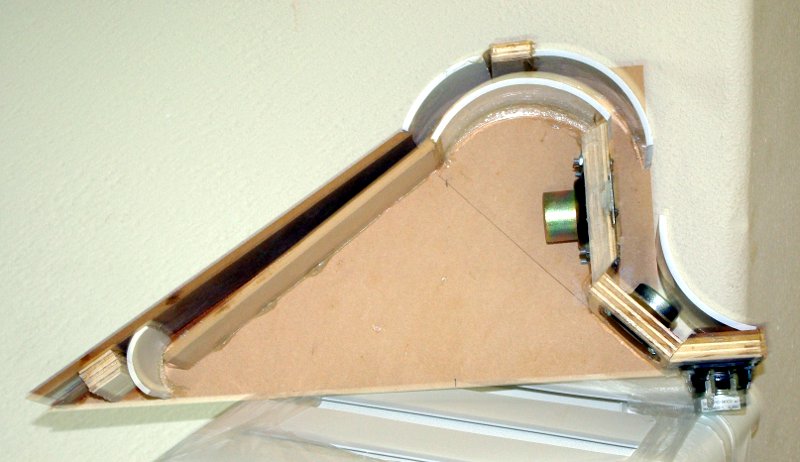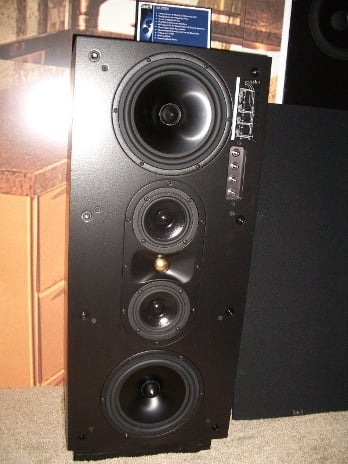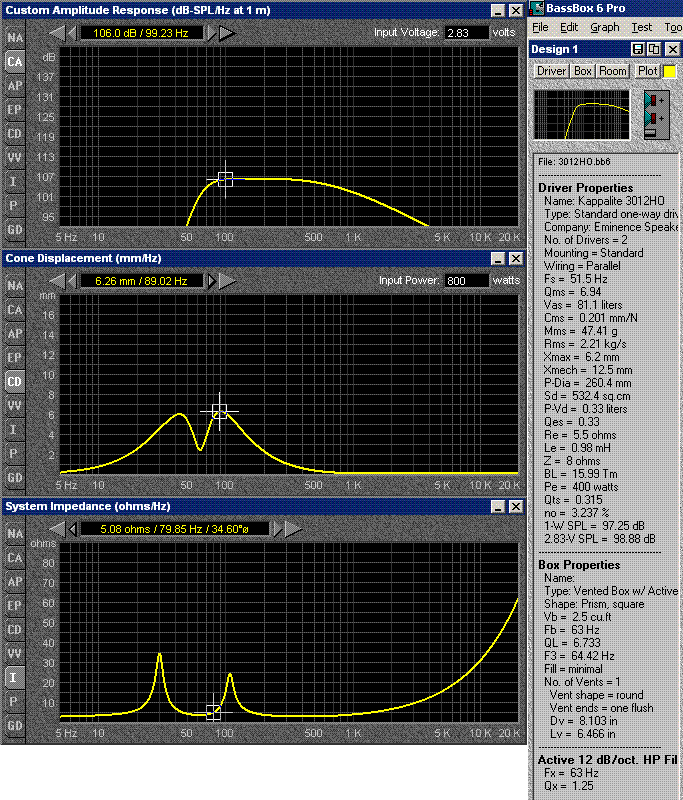So how *big* is it?
That particular one was ~365 L, but that was to get a specific directivity, so this to a great extent will govern its size. A wider directivity variant I did is 'only' ~263 L since it doesn't need such a large mouth. Its hypex FLH variant is ~275 L with a wider flat BW and why back when I did these I didn't see much point in using a TH this high. If you don't care about pattern control though........
GM
Can tapped horn play midbass
You might be interested in my new midbasses. They are not finished yet. Here are some "in progress" pics.

In a nutshell, this is a Unity that's been turned inside out, but it's also a tapped horn. Sorta.
That's the simple explanation. Here's the complex one:

In my new midbass solution, I've take the Unity and I've turned it inside out. Now the tweeters are on the outside, and the mouth goes *backwards*.
Tapped horns have limited bandwidth, but I've found that the use of multiple drivers smooths the response. I've also found that the high frequency extension improves as the woofer gets close to the outside of the box.
Which is why the tweeters in this design are all the way to the edge.
The 2nd driver is there to smooth the response, increase efficiency, and increase power handling.
The 3rd driver serves the same function as the midranges in a Unity horn; it's there to widen the bandwidth of the entire system. You might wonder why there is only one midrange, instead of four, and why it's only on one side. This is because it is also a tapped horn. In a tapped horn, the driver that plays the highest MUST be at the apex of the horn. If the tweeter was not at the apex of the horn you'd get a notch that would limit your high frequency response. (Due to this rule, the second tweeter in this horn is not playing full range. There's a low pass filter to prevent it from screwing up the response of the other tweeter.)
In the end, we have something similar to a Unity - an array that's loaded on a single horn. But flipped inside-out.
Here's the URL:
Space: The Final Frontier - Page 4 - DIYMA.com
Can tapped horn play midbass
Check out my new midranges.
Space: The Final Frontier - Page 4 - DIYMA.com
It's kind like a Unity horn turned inside out. But it's also a tapped horn. (The tapped horn idea came from the Unity horn BTW.)
looking good put what i am looking for is something that can play outdoor in large open area.
you mention that you've built few unity horn do you have any unity horn plan in your files that can be use for out door.
If you're playing outside, why not just buy a Synergy horn?
If Danley made a Synergy horn for my car, I'd buy it. The only reason that I bother to build tapped horns for the car is that no one is selling them.
Patrick:
What are the drivers you show in the photo with the black baffle, in an wmtmw arrangement? I'm curious about the oval mtm part...is that one assembly?
Thanks!
That's a Snell eXpanding array. I have another thread on here with all the specifics - driver models, theory, Stereophile review, etc...
It's a sadly overlooked design IMHO. In a nutshell, the designer used a very specific set of driver spacing and crossover points to approximate a point-source. The oval MTM part is used to match the directivity of the tweeter and the midranges at the crossover point, which improves the polar response and simplifies the crossover.
Off the top of my head, the tweeter is an Audax and the woofers are Vifa. But check out my other post on it to be sure.
- Status
- This old topic is closed. If you want to reopen this topic, contact a moderator using the "Report Post" button.
- Home
- Loudspeakers
- Subwoofers
- tapped horn for midbass
